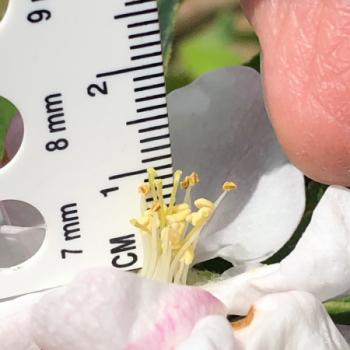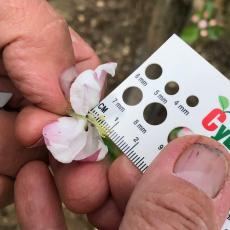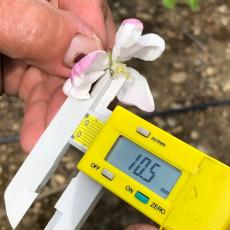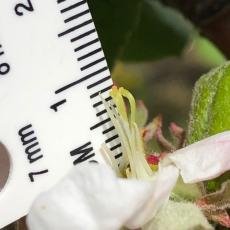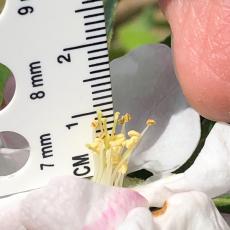Bloom Thinning with the Pollen Tube Growth Model (PTGM)
Mike Basedow, CCE-ENYCHP & Dan Donahue CCE-ENYCHP
Reprinted from Cornell ENYCHP Tree Fruit E-Alert, Donahue and Basedow, for April 30th, 2019 @ 10:00 am
We trialed the PTGM thinning protocol in ENY orchards in 2018 to mixed results. Spray timings are critical (hours, not days), and inclement weather can interfere. Trials have been set up in Ulster, Columbia, and Clinton Counties for 2019.
We are not recommending the PTGM for the Hudson Valley in 2019. Our current weather forecasts are suggesting poor pollination conditions and we don’t have adequate experience with PTGM here in the ENY under these conditions. The model assumes that open flowers are pollinated promptly, which is a reasonable assumption when pollination conditions are good. Our 2019 HV trials may shed some light on this question.
Ammonium thiosulfate (ATS) when used as a foliar fertilizer has bloom thinning activity, as does lime-sulfur when applied as a fungicide for apple scab. These materials have a very narrow (1-2 day) timing window where they can be effectively used to ensure only the desired number of king blooms have been fertilized. This spray timing can be determined using the Pollen Tube Growth Model on NEWA. Click on the link here to access the PTGM on NEWA.
The model requires a few key measurements, including assessing the amount of king flowers opening until the desired crop load is reached, and measuring a sample of flower style lengths to accurately set model parameters. (See below for example pictures how to measure style length.)
Once you enter the necessary info and run the model, you will make your first application when the model reaches 100%. One to two additional sprays should follow when the model again reaches 60% These subsequent sprays can be a day or two after the initial application.
If you are interested in bloom thinning with the PTGM, we highly recommended reading the recent Fruit Quarterly article by Dr. Greg Peck and Dan Olmstead available here, and this additional guide by Dr. James Schupp and Dr. Tom Kon here for a full background and detailed instructions. Call either Mike or Dan to discuss your specific plans. Ed. note: don’t call them call me, Jon Clements :-) Also, here is a very good write-up by from Penn State: Blossom Thinning Apples with Lime Sulfur: Old Dog, New Trick
If it will be your first year using the PTGM, we recommend you trial it on a small scale until you become more comfortable and confident with it.
Note: measurement of average style length is important per instructions in the PTGM. Below are sample ways to measure style length. These pictures were taken by Jon Clements at the UMass Cold Spring Orchard on 7-May, 2019. Zestar! is the apple variety. Average style length from these seven pictures is 9.2 millimeters.
